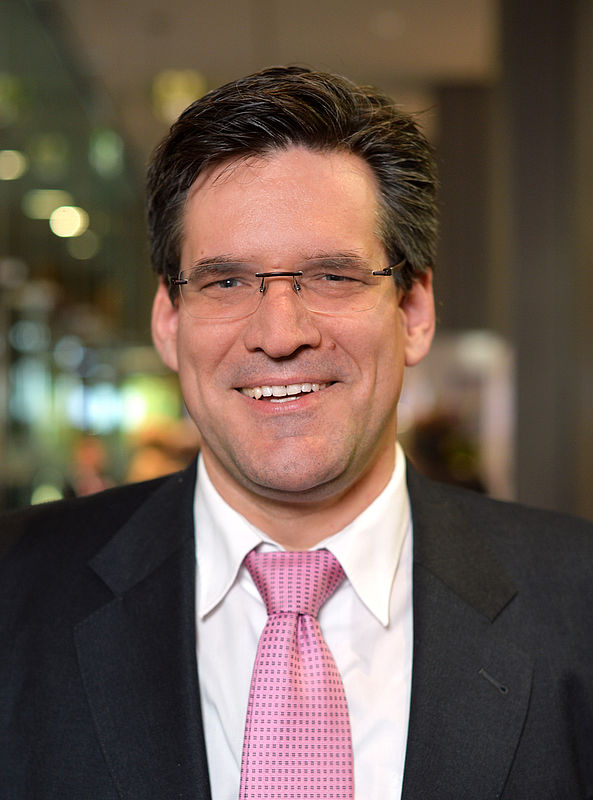The aim of the DEDICATE study was to find out whether catheter-based aortic valve implantation is on a par with surgical aortic valve replacement in younger patients and those with a low surgical risk. This was demonstrated surprisingly clearly: Within one year of the procedure, half as many deaths and strokes (47 per cent) occurred in the catheter group as in the surgical group. "This means that, based on these data, minimally invasive catheter treatment of aortic valve stenosis can also be considered as an alternative to surgery in younger and lower-risk people," says study leader Prof. Dr Stefan Blankenberg, Medical Director of the University Heart and Vascular Centre at the UKE and spokesperson for the DZHK North.
Both methods have advantages and disadvantages
In aortic valve stenosis, the aortic valve is narrowed, which obstructs the flow of blood from the left ventricle into the main artery, the aorta. It is one of the most common heart valve diseases and increases with age. Severe aortic valve stenosis leads to shortness of breath and reduced exercise tolerance and poses a high risk of sudden cardiac death. If the valve is replaced with a prosthesis, blood can flow freely again and patients gain quality of life.
Until now, surgical aortic valve replacement, which has been performed since the 1970s, has been considered the gold standard. The new heart valve prosthesis is sutured into place with the chest open using a heart-lung machine. The method is characterised by a high degree of tightness and longevity of the prosthesis.
According to the guideline, the minimally invasive catheter procedure is currently mainly recommended for older and more morbid patients and those with concomitant diseases. The aortic valve prosthesis is advanced to the aorta with a catheter via a puncture in the inguinal artery and deployed there. The procedure is gentler on the body, but the seal between the prosthesis frame and the aortic wall is slightly less tight and the pacemaker rate is somewhat higher. There is less extensive data on the long-term durability of these newer biological prostheses than for surgically implanted prostheses
Catheter-supported valve replacement becomes the treatment of choice
The study team randomly divided 1,414 patients with an average age of 74 years - which is considered young for aortic valve stenosis - into two groups and treated them with catheterisation or surgery. All patients were basically suitable for both procedures. A special feature of the study was that it did not specify the selection of the various available prosthesis models - the treatment teams were able to decide for themselves. "We tested a form of fitting and not a specific medical device, unlike the medical device manufacturers do. This means that the results can be transferred very well to routine care," says Blankenberg.
The scientists are now eager to see what the 5-year data analysis will reveal. Blankenberg assumes that the results will remain stable even after 3 and 5 years. He is convinced that catheter-based aortic valve replacement will increasingly become the treatment of choice in routine care. However, the cardiologist, who will also be President of the German Society of Cardiology (DGK) from 2025, believes that local heart teams should work together to decide on the most suitable method.
Valve replacement should only be performed at specialised heart centers
Prof. Stefan Blankenberg and Prof. Volkmar Falk, senior author and President of the German Society for Thoracic, Cardiac and Vascular Surgery (DGTHG), emphasise that the very good TAVI results also reflect the high level of expertise and excellent conditions of the 38 specialised study centres. In the future, this form of therapy should continue to be carried out at cardiac centres that work according to the latest scientific findings, bring together experienced catheter experts and cardiovascular surgeons and have high-performance intensive care and cardio-anaesthesia.
For both, the DEDICATE study is also a model for cooperation between the German Society of Cardiology, the German Society of Thoracic, Cardiac and Vascular Surgery, the German Heart Foundation and the German Centre for Cardiovascular Research as part of the National Cardiac Alliance: "We can only solve the unanswered questions in cardiovascular medicine together - for the benefit of patients."
Prof. Thomas Voigtländer, Chairman of the German Heart Foundation, also sees significant improvements for the large group of patients with aortic valve stenosis: "With this catheter-based therapy option, the treatment teams can now respond to the situation of those affected in an even more individualised way."
Link to the original publication: Transcatheter or Surgical Treatment of Aortic-Valve Stenosis (Blankenberg et al., 2024)
More information on the DEDICATE-DZHK6 study (in German only)


